April 25, 2025
– 11 minute read
Discover top newsletter best practices to boost engagement, increase conversions, and stand out in crowded inboxes with effective design, content, and strategy tips

Cormac O’Sullivan
Author
Email marketing continues to be one of the most effective tools for reaching your audience. In fact, for every $1 spent on email marketing, the average return is $42. But not every email gets opened or drives action. That’s where newsletter best practices come in.
A well-crafted newsletter can do more than share updates. It can build relationships, increase engagement, and drive conversions. But with inboxes getting more crowded by the day, you need to stand out. That means using the right tone, content structure, and design while keeping things simple and helpful.

What is a Newsletter?
A newsletter is a type of email sent regularly to your subscribers. It usually includes updates, tips, curated content, or promotional offers. Newsletters are a key part of many email marketing programs, helping businesses stay connected with their audience.
What Makes a Good Newsletter?
Not all newsletters are created equal. A good newsletter grabs attention, delivers real value, and encourages the reader to take action. It builds trust, improves brand recognition, and ultimately supports your marketing goals. But what exactly makes a newsletter stand out in a crowded inbox? Let’s break it down.
Relevant Information
Relevance is everything. If your content doesn’t speak to your audience’s interests or needs, they won’t read your email they’ll delete it or unsubscribe. The best newsletters are built around topics that matter to your readers. This could mean industry trends, product updates, or curated content that solves real problems.
For example, a newsletter for marketers might include updates on new marketing tools, strategies for increasing engagement and conversion rates, or trends in social media. The key is to understand your audience deeply and use segmentation when necessary. Segmenting your email list by interests or behavior helps you send only the most relevant types of emails to each subscriber.
Actionable Advice
Sharing tips is nice, but sharing actionable advice is better. Readers should be able to apply what they’ve learned right away. Whether you're sharing a quick how-to or a step-by-step guide, aim to leave your audience with something they can actually do.
Let’s say you’re writing to small business owners. Instead of just telling them that email subject lines are important, show them how to write better ones. Use examples. Give templates. Offer strategies they can test in their next campaign. Actionable content helps position your brand as a trusted resource and it increases the chances your audience will look forward to your next email.
Unique Perspectives & Insights
Your newsletter shouldn’t sound like every other one in your niche. What makes your voice or content different? Maybe it’s your storytelling. Maybe it’s how you connect data to real-world experiences. Maybe you bring insights from a unique background.
By sharing your own unique perspectives, industry takeaways, or lessons learned, you add something new to the conversation. This builds authority and loyalty. And it gives people a reason to keep opening your emails, even if they don’t always act on them right away.
Linking out to deeper insights or thought-provoking content also works well. For instance, referencing a study or article with a hyperlink to back up your point adds credibility. Your readers aren’t just getting opinions they’re getting informed perspectives backed by sources.
Friendly, Approachable, and Personable Tone
Your newsletter should feel like a message from a friend, not a cold sales pitch. Use a tone that’s easygoing, clear, and conversational. People don’t want to read something that sounds robotic or overly polished. Keep your language natural and relatable.
Adding a personal touch like using first names or referencing past interactions can improve the customer experience and help build stronger connections. Humor, storytelling, and light commentary can also bring life to your writing. As long as it stays on-brand, a warm tone increases trust and keeps your newsletter human.
Don’t forget, your tone should match the message. If you’re offering calls to action (CTAs), they should feel inviting not demanding. A simple “Take a look” or “Try it today” works better than aggressive language. This friendly approach can lead to more clicks and better engagement overall.
How to Write a Newsletter?
Writing a great newsletter isn’t about luck it’s about strategy. You need to plan your content, tailor it to your audience, and make it easy to read and act on. Whether you're new to email marketing or looking to improve an existing email marketing program, following a solid structure helps. Here’s how to get started.
Get Creative with Email Subject Lines
The subject line is the first thing your reader sees, and it often determines whether they open your email or ignore it. A strong subject line grabs attention without being misleading. It should spark curiosity, offer value, or create a sense of urgency but always stay honest. Using personalized elements like a subscriber's name or referencing their recent activity can increase open rates.
Adding emojis, asking questions, or teasing what's inside can also help. Just make sure the tone matches your brand. Your subject line should always reflect what’s in the email. Misleading readers might get you one open, but it will damage trust and hurt your engagement over time. According to HubSpot, emails with personalized subject lines are 26% more likely to be opened, so make it count.
Pick One CTA, Keep Design & Copy Minimal
Every newsletter should have one clear goal. That goal should be represented by a single, strong call to action. Whether you want readers to download a guide, visit your blog, or make a purchase, your CTA should stand out without overwhelming the reader. Cluttered emails with too many CTAs confuse readers and reduce your chances of conversion.
The design should be clean and simple. Use enough white space so the content is easy to read, and don’t overdo it with colors or fonts. Keep your copy tight and conversational. A short paragraph with a single button that says “Learn More” or “Try It Today” is often more effective than a wall of text. Think of your newsletter like a landing page it should have a clear focus, minimal distractions, and a smooth user experience that encourages action.
Make Sure Images Have Alt Text
Images can add visual interest to your newsletter, but they must be optimized for accessibility and performance. Always include alt text for every image. Alt text is the description that shows up if the image doesn’t load and is also read aloud by screen readers for visually impaired users. This makes your newsletter more inclusive and ensures your message is still clear even when images can’t be viewed.
It’s also an opportunity to reinforce your CTA or messaging. Instead of generic phrases like “image123,” use descriptive alt text like “Download your free marketing checklist.” This small detail can improve the overall customer experience, and many email service providers (ESPs) include built-in tools to help you manage this.
Make It Easy to Unsubscribe
Letting people go is just as important as getting them to sign up. You need to make the unsubscribe option easy to find and simple to use. Hiding or complicating it not only frustrates users, but can also hurt your sender reputation and deliverability. A transparent unsubscribe process shows respect for your audience and helps keep your email list clean.
This improves your engagement and conversion rates because your emails reach people who truly want to hear from you. It’s also a legal requirement under regulations like GDPR and CAN-SPAM. Most email marketing tools will automatically include an unsubscribe link in your footer, but it’s worth checking to ensure the process is smooth and clear.
Get Creative with Email Subject Lines
Subject lines are the gatekeepers of your newsletter. If they don’t spark interest, your carefully written content won’t get read. The best subject lines are short, intriguing, and relevant. They tap into curiosity or highlight a clear benefit, making it hard not to click. Including numbers, asking a question, or offering something unexpected often works well. For example, a subject line like “The one tip your marketing strategy is missing” gives just enough detail to draw the reader in without giving everything away. Personalization is also powerful.
Including the recipient’s name or referencing a previous action can make the email feel more tailored. A study showed that personalized subject lines can boost open rates by 26%. Keep testing different approaches to see what resonates most with your audience.
Pick One CTA, Keep Design & Copy Minimal
A newsletter should have a single purpose. Whether you're promoting a product, driving traffic to a blog post, or offering a free resource, focus on one primary call to action. Too many links or mixed messages create confusion and reduce the chance of your reader taking any action at all. Keep your layout simple and easy to scan. Use plenty of white space, consistent font sizes, and a straightforward color palette. A clean design helps your message shine and supports a smooth reading experience.
The copy should be friendly, direct, and free of jargon. Instead of stuffing your email with long paragraphs, get straight to the point. Your CTA button should be prominent and clear, using action-driven language like “Start Now” or “Download the Guide.” Treat the structure of your newsletter like a mini landing page everything should guide the reader toward a single next step.
Make Sure Images Have Alt Text
Images make your newsletter visually appealing, but not everyone will see them. Some recipients block images by default, and others may use screen readers. That’s why adding alt text to every image is a must. Alt text not only improves accessibility for people with visual impairments but also ensures your message gets across when images fail to load. Describe the image in a way that reinforces your email’s content or CTA.
For example, if your image is a preview of a downloadable checklist, the alt text could say “Preview of free email marketing checklist.” Many email service providers (ESPs) make it easy to add alt text as you upload visuals. This small step enhances the customer experience and can positively impact your engagement and conversion rates, especially when readers rely on screen readers to understand your content.
Make It Easy to Unsubscribe
Every email you send should respect your reader’s choice to opt out. A visible and easy-to-use unsubscribe link is not just good etiquette it’s also required by laws like GDPR and the CAN-SPAM Act. Making it hard to unsubscribe creates frustration and increases the chances of your emails being marked as spam. When readers can leave easily, you maintain a clean email list filled with genuinely interested subscribers.
This leads to higher open rates and better performance from your email marketing program. The unsubscribe link is typically found at the bottom of the email, but don’t bury it in fine print. Use clear language and offer an optional feedback form so you can learn why people are leaving. That insight can help you improve your content and increase engagement with future subscribers.
5 Best Practices for Newsletters
Even with great content, a newsletter can fall flat if you overlook the basics. Following email newsletter best practices helps you stand out, keep subscribers engaged, and boost your conversion rates. Let’s look at a few essential tips that consistently drive results.
Keep It Short & Sweet
People are busy. If your email looks too long or complicated, chances are they won’t read it. A good newsletter respects your reader’s time. Stick to one main message and keep paragraphs short. Use headings and bold text to guide the eye, and make sure the most important information appears at the top.
This is especially crucial for readers scanning on mobile devices. Short, direct emails with one call to action (CTA) tend to perform better than long-winded ones. Clarity keeps your message from getting lost, and simplicity increases the chance that people will take the action you want whether it’s clicking a link, signing up, or making a purchase.
Make Your Content Valuable
Each newsletter should offer something your audience actually wants. Whether it's tips, free resources, or updates they can use, value is what keeps people subscribed. If your content consistently helps solve problems, answer questions, or spark ideas, readers will be more likely to open future emails. Educational content tends to perform especially well think how-tos, insights, or curated resources.
Incorporate content that isn’t easy to find elsewhere, and present it from your unique perspective. This positions your newsletter as a must-read and helps build authority. Offering exclusive updates or early access also increases perceived value, which improves engagement and fosters long-term loyalty.
Always Test Your Emails
Before sending your newsletter to your entire email list, always preview and test it. Most email service providers (ESPs) allow you to send test versions to check formatting, links, and layout. This helps avoid broken links, missing images, or formatting issues that could turn readers off. Also test how the email looks in different browsers and devices to catch any layout issues.
A good customer experience starts with a functional email. Don't forget to proofread typos or sloppy formatting can hurt your credibility. Treat your test email like a live version to spot any mistakes before they reach your audience.
Don’t Skip A/B Testing
If you're not using A/B testing, you're missing a big opportunity. A/B testing lets you compare two versions of an email to see which one performs better. You can test different email subject lines, CTAs, layouts, or even send times. It’s one of the most reliable ways to learn what your audience responds to.
For example, you might test whether a question in the subject line gets more opens than a statement. Or compare a button CTA to a linked sentence. Tools like Campaign Monitor make it easy to set up and track results. Over time, these insights help refine your strategy and improve your email marketing program.
Mobile Friendly
More than 50% of all emails are now opened on mobile devices. If your newsletter isn’t mobile-friendly, you’re missing out on potential engagement. Use a responsive design that adjusts to different screen sizes. Stick to a single-column layout, use large fonts, and ensure buttons are big enough to tap easily.
Also, keep subject lines short so they don’t get cut off on smaller screens. Make sure images load quickly and that alt text is in place. A clean, responsive design improves the overall customer experience and helps maintain high engagement and conversion rates across devices.
5 Inspiring Newsletter Examples

Le Bab
Le Bab turns a simple product launch into a mini experience, setting the scene with warmer weather and the promise of ice cream season. By introducing Pistachio Kulfi with rich, evocative language, the newsletter pulls readers into the flavour and feeling of the moment. It ends with an inviting call-to-action that nudges customers to step into the story themselves and try the new dessert.
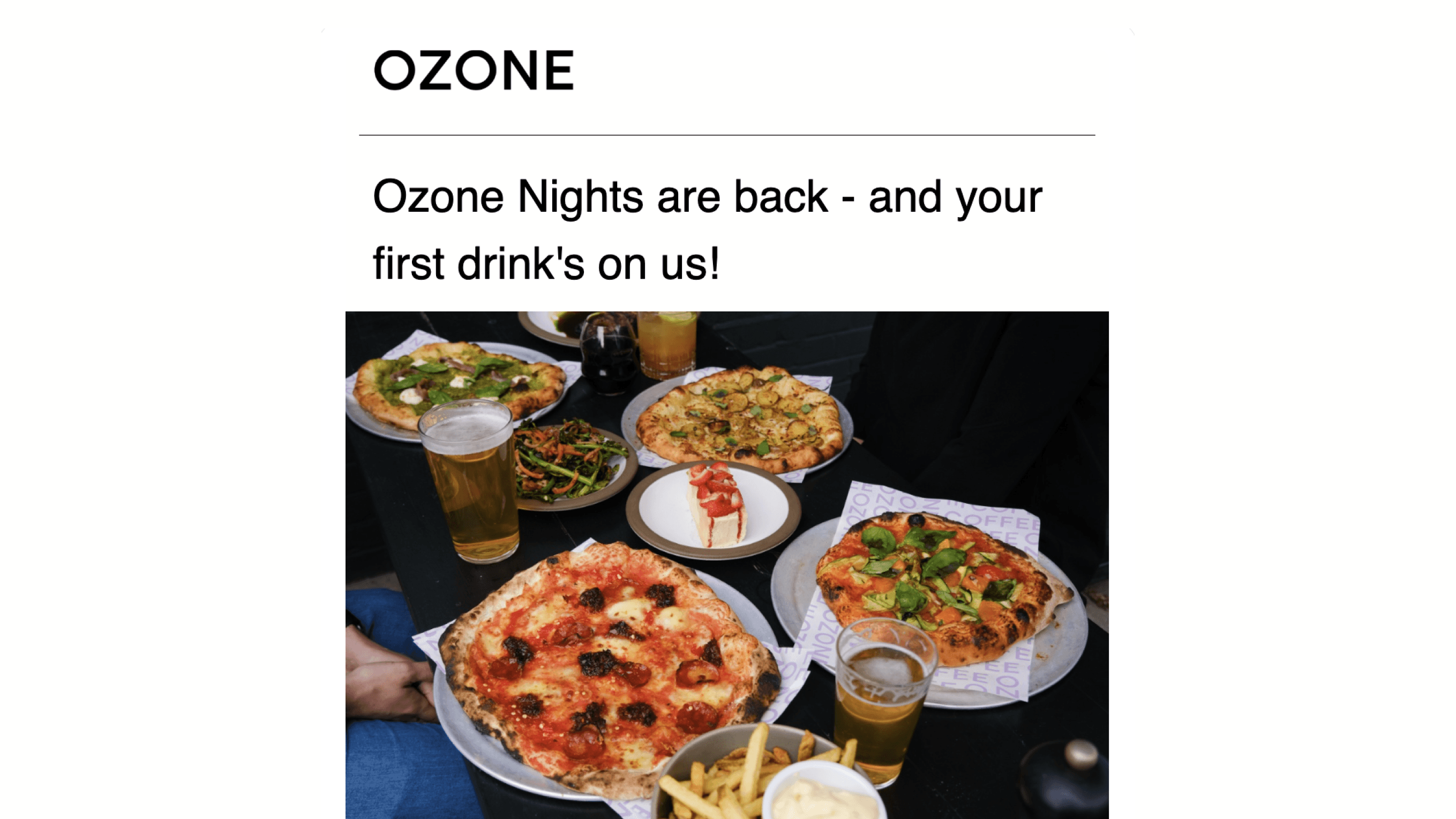
Ozone
Ozone sets the scene for a lively night out by announcing the return of Ozone Nights, instantly creating a sense of excitement and community. The vibrant food imagery pulls readers into the experience, making them feel like they’re already at the table with friends. By offering a free first drink, the newsletter uses a strong incentive to turn that feeling into real-world visits and higher customer engagement.
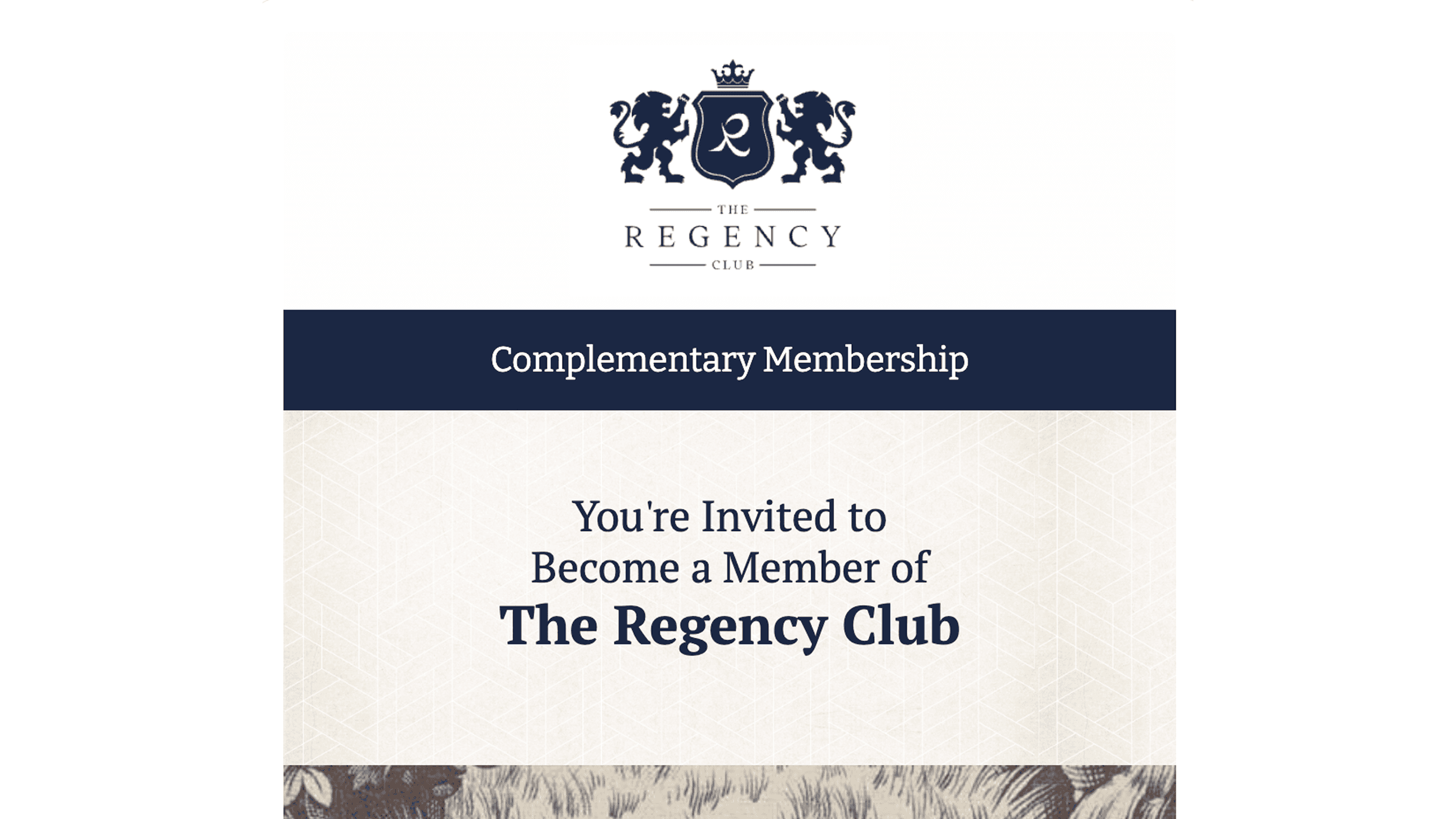
The Regency Club
The Regency Club crafts a sense of exclusivity by framing the email as a personal invitation, instantly making readers feel chosen and valued. Its elegant design and refined tone reinforce the brand’s premium identity, drawing readers into a world of status and belonging. By offering a complimentary membership, the newsletter turns aspiration into action, encouraging sign-ups through emotional appeal and perceived privilege.
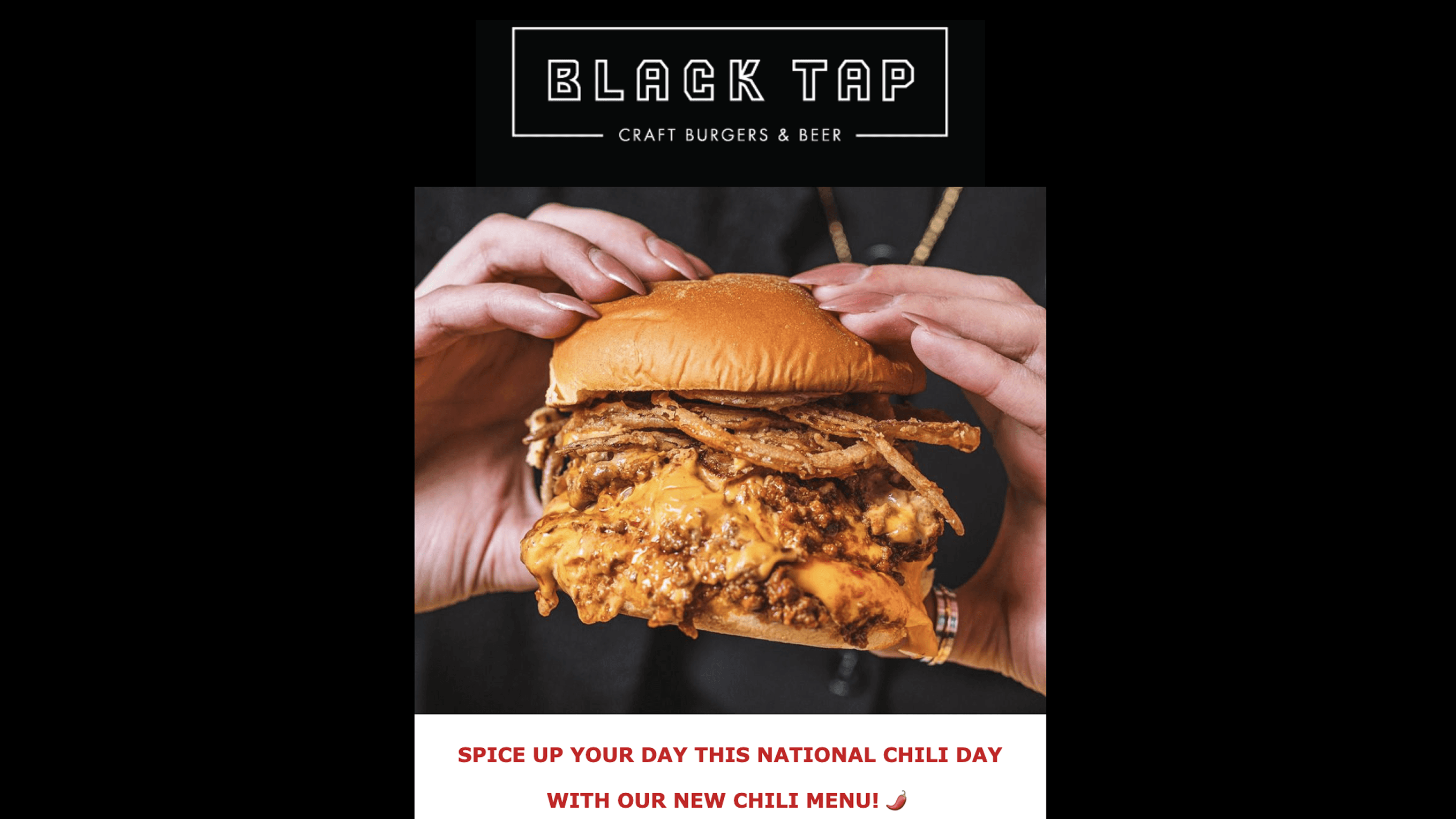
Black Tap
Black Tap grabs attention instantly with a bold, mouthwatering visual that makes the new chili-inspired burger feel irresistible. By tying the promotion to National Chili Day, the newsletter creates a fun, timely narrative that gives customers a reason to celebrate. The energetic call-to-action invites readers to “spice up” their day, turning a limited-time menu drop into an experience they don’t want to miss.
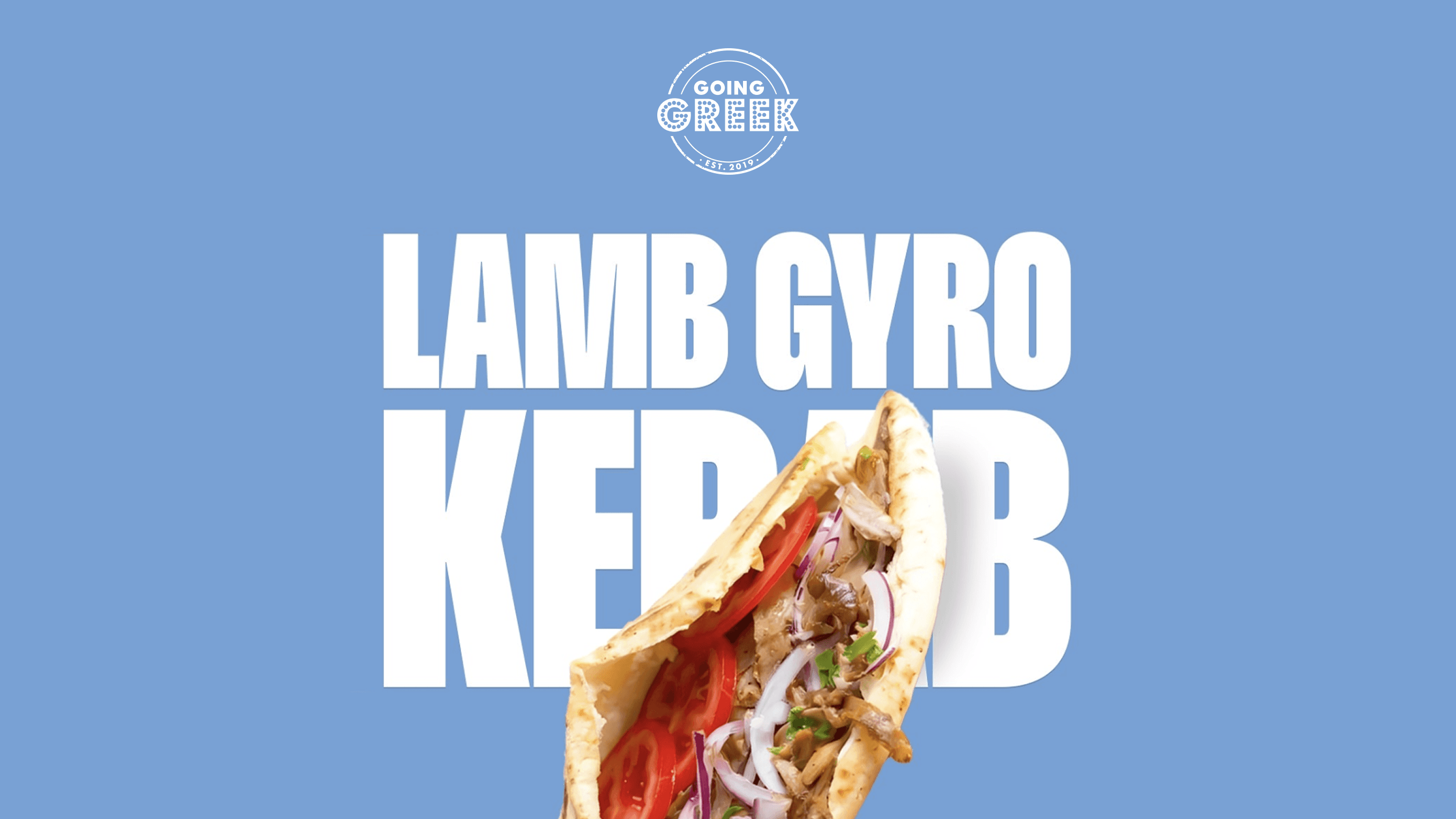
Going Greek
Going Greek grabs attention with bold typography and a vibrant visual that instantly transports readers to the flavours of the Mediterranean. The spotlight on their new Lamb Gyro Kebab creates a hero moment, making the product update feel fresh, exciting, and worth craving right away. This simple, striking newsletter turns a single new menu highlight into an irresistible invitation to experience authentic Greek street food
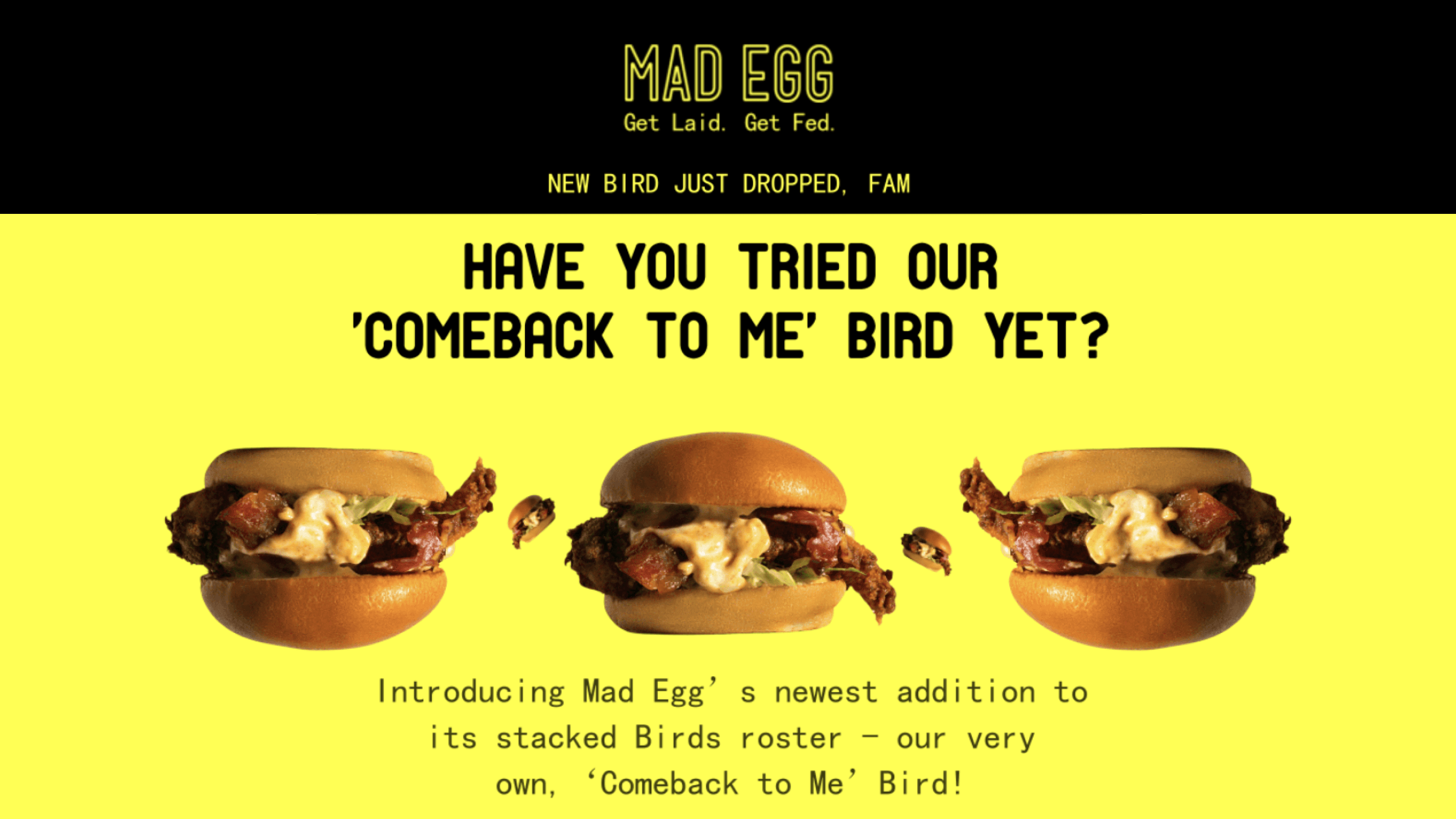
Mad Egg
Mad Egg leans into its playful personality with bold colours and cheeky copy to announce a fresh product update, the new ‘Comeback to Me’ Bird. The striking visuals of the stacked chicken burgers create instant appetite appeal, making the launch feel fun, loud, and impossible to ignore. By positioning the burger as the newest star in their “Birds roster,” the newsletter turns a menu update into an engaging moment fans will want to try in-store.
Conclusion
A successful newsletter blends strategy, clarity, and consistency. By focusing on valuable content, clear calls to action, and mobile-friendly design, you create emails your audience actually wants to read. Keep messages short, test before sending, and don’t forget the power of a great subject line.
Whether you're building brand loyalty, boosting traffic, or increasing sales, following these email newsletter best practices will help you grow your email list and improve engagement and conversion rates. With the right approach, your newsletter can become one of your most effective marketing tools bringing real results, one email at a time.



